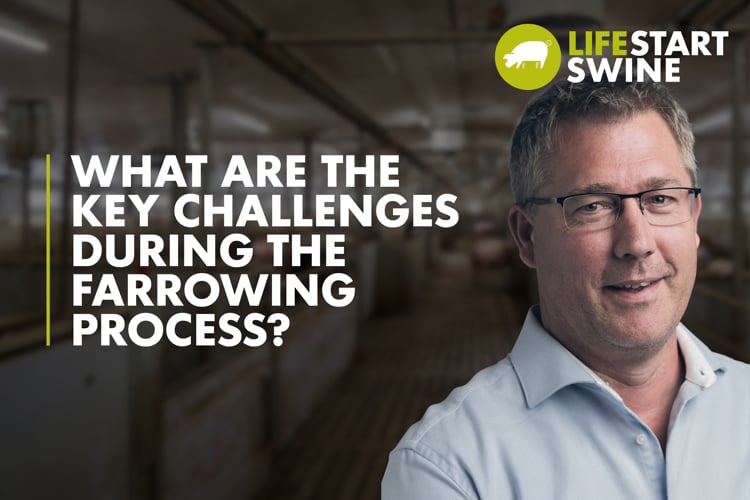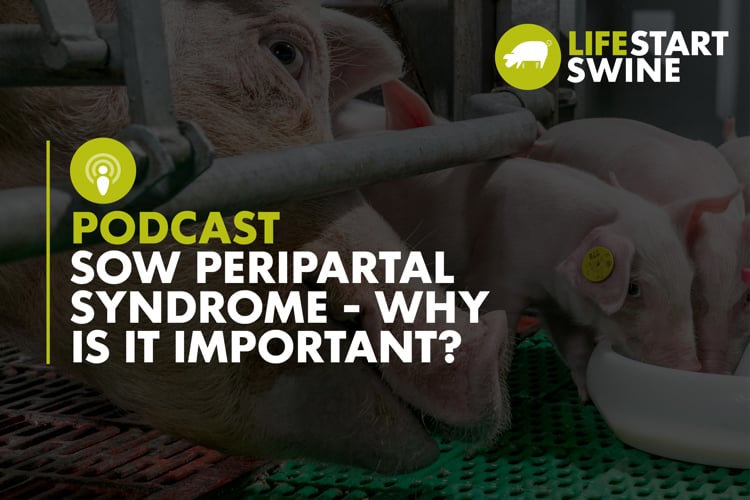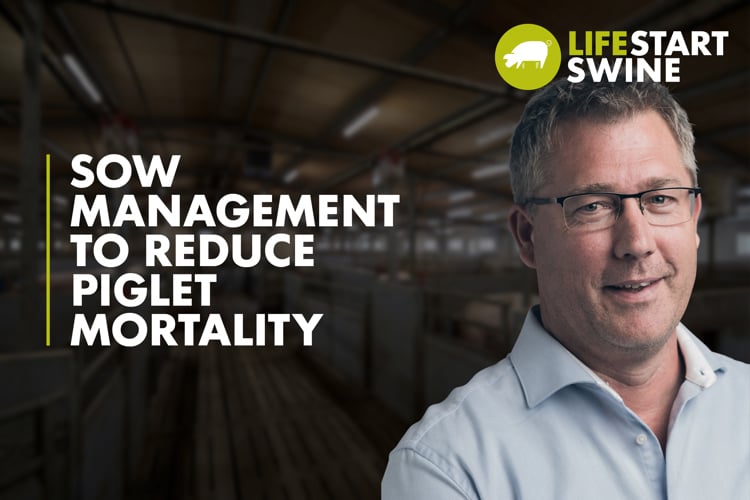New lysine research suggests adding more lysine to gilt diet at day 90 of gestation
- 2025
- EARLY LIFE
Sarah Mikesell, editor of The Pig Site working in collaboration with LifeStart Swine, spoke recently to Dr. Chantal Farmer. She is a research scientist with Agriculture and Agri-Food Canada based at Sherbrooke Research and Development Center in Quebec, Canada. Dr. Farmer's research is focused on sow lactation biology.
Sow litter size continues to increase. However, sow milk production has not increased enough to accommodate those additional piglets. New research indicates that the use of lysine can stimulate mammary development and aid in sow milk production.
Lysine - what is it?
“Lysine is an amino acid, but it's not just any amino acid - it's an essential amino acid. It's the first limiting amino acid in most swine diets, so it's very important,” said Dr. Farmer. “It's required for the build-up of tissues and it's essential for growth, but it's also essential for reproductive functions.”
Many studies have been conducted to determine the lysine requirement at different life stages of the pig. However, the end of gestation is a critical period, and this stage has lacked research and information.
“From day 90 of gestation onward, you have a lot of fetal growth, but you also have a lot of mammary tissue development,” she said. “The more mammary tissue you have at the beginning of lactation, the greater milking potential of the sow. So, it's really important to know how much lysine is required in that critical period at the end of gestation.”
To answer this question, Dr. Farmer conducted two studies. The first study utilized a normal corn-soy diet for the control animals, while the treated animals (gilts) received 40% more lysine by adding more soybean meal in the diet.
“If you add more soybean meal, yes you increase lysine, but you also alter other amino acid amounts, and protein will go up. So, we did not only affect the lysine, but the 40% increase was really for lysine,” she explained. “We fed that increased lysine intake via more soybean from day 90 of gestation to day 110. Then we looked at the mammary tissue, and it was quite amazing. You have 44% more of the good milk synthesizing tissue with 40% more lysine in the diet in that critical period of late gestation and that’s a 1:1 ratio which again is quite amazing.”
Since the gilt is still growing, it’s important to consider phase feeding where she's not fed the same type of feed up to day 90 of gestation. After day 90, operations could consider a top-dressing with soybean meal or there are several options to consider.
“I know phase feeding is not very popular, but I think it's the direction that we're going in if we want to meet the lysine requirement for the mammary tissue and obviously not feed it too much throughout the whole gestation period,” she noted.
Upon completion of the gilt lysine study, she then considered if the same would also be true for sows?
“We know that mammary development takes place before puberty and also at the end of gestation. After the first lactation when you wean the sow, there will be an involution of mammary tissue and it will develop again in the next gestation,” she said. “But are the requirements different between that first gestation in a gilt, and the second or third gestation in an animal that already farrowed?”
Dr. Farmer’s second study used sows in their second and third parity with the same treatment as the gilt study. The estimated requirements for the multiparous sow are lower compared to those of gilts. Using the estimated requirements from the NRC, Dr. Farmer still increased the amount of lysine by 40% using soybean meal.
“When you look at mammary tissue, in theory, I was thinking that we’d see similar results to the gilt study, but that's where research is quite amazing, because it doesn't always do what you think it will do,” she said. “There was actually no difference whatsoever, so it's telling me that in the multiparous animal, increasing lysine by feeding more soybean meal in late gestation, has no positive effect in terms of mammary development.”
Dr. Farmer believes this is most likely because the multiparous sow is no longer growing.
“It seems that when a gilt’s body is growing, then at the same time, her mammary tissue is growing, she will respond to supplementary lysine,” she said. “But a multiparous sow is not growing anymore, and it seems that she does not respond at all.”
Also interesting is that the mammary development in a multiparous animal is already greater before you even start to give lysine. So they aren’t starting at the same baseline which may also be a factor in the study results.
Recommended management changes
Considering the results of both studies, Dr. Farmer’s message to producers is that if they're willing to spend time and money to develop more mammary tissue for more milk production, their energy should be put into gilts not in the multiparous sows.
“In terms of phase feeding, it's really the gilts, during the first gestation, where you do need as of day 90 to give more lysine. This has to be done by giving more soybean meal to the animal.”
Most pig producers are feeding the same diet throughout gestation. However, the research suggests that gilts require a phased feeding diet. It’s important to have a different diet utilizing more soybean meal or a top-dressing with more soybean meal.
“It has to be 40% more lysine. If it's less than 40%, most likely, they will not see an effect” she said. “This is a change in the way to feed gilts in the first gestation. But I think it's really where the industry is headed now. We have such big litter sizes that we need to help the sow to produce enough milk for all these piglets. Otherwise, what's the point? You have a lot of piglets that don't grow enough just because they don't have enough milk from the sow, so she needs help.”
In terms of cost, the diet change isn’t very expensive. But a phased feeding approach does require more labor to set up an operation’s system to offer two types of feed in the gestation period or top-dressing.
New lysine research underway
Dr. Farmer has started a new research project that she calls the synergy projects.
“I want to know if we can have additive effects. Right now, I'm giving 40% more lysine with soybean meal to the gilts at the end of gestation, and in lactation, I'm increasing the hormone prolactin, which I know will increase milk yield,” she explained. “I want to know if the effects are additive, if you have more mammary tissue, then if you stimulate the tissue in lactation to give more milk, will it give even more milk than if you just have the lysine by itself.”


